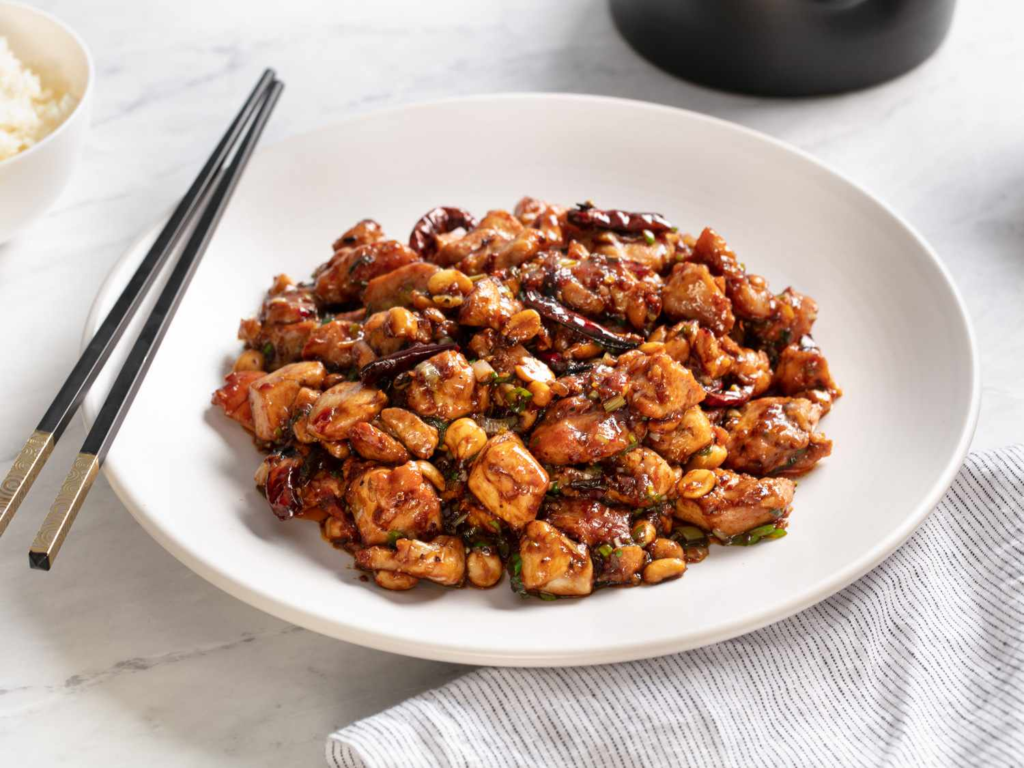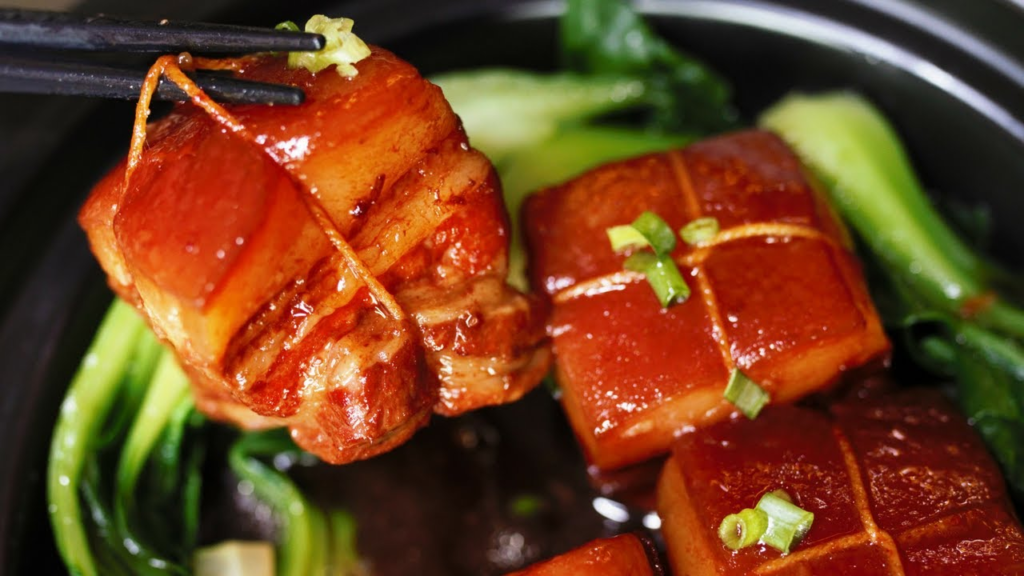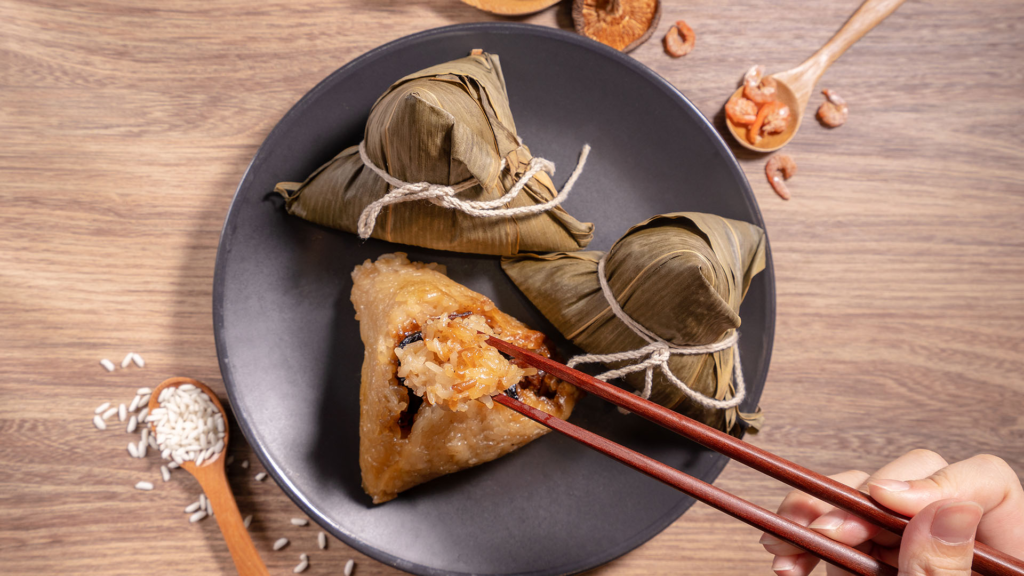China Street Food. China’s culinary landscape is as diverse as its vast geography, offering an incredible array of flavors, ingredients, and cooking techniques that have evolved over thousands of years. From the bustling streets of Beijing to the serene tea houses of Guangdong, each region of China brings something unique to the table. Whether you’re a seasoned traveler or a curious foodie, exploring the top dishes of China is a journey into the heart of its culture and history. In this article, we’ll guide you through the must-try foods that define Chinese cuisine, along with practical travel hacks and tips to make the most of your culinary adventure.
5. Jianbing (Tianjin/Beijing)

Jianbing is one of China’s most popular China Street Food , often eaten for breakfast. This savory crepe is made from a batter of wheat and mung bean flour, cooked on a griddle, and filled with egg, scallions, cilantro, hoisin sauce, and chili paste. It’s then folded up with a crispy wonton skin inside, making it crunchy on the outside and soft on the inside.
Street vendors are the best place to get authentic Jianbing, but be sure to check the cleanliness and freshness of the ingredients. Early morning is the best time to enjoy Jianbing when it’s freshly made.
You can customize your Jianbing by adding or omitting ingredients, like extra chili or skipping the cilantro. Just communicate your preferences to the vendor.
4. Kung Pao Chicken (Sichuan)

Kung Pao Chicken is a popular China Street Food that originates from Sichuan cuisine but is now enjoyed all over China and beyond. The dish consists of diced chicken stir-fried with peanuts, vegetables, and chili peppers in a savory, sweet, and slightly spicy sauce.
To experience authentic Kung Pao Chicken, avoid touristy areas where the dish might be overly sweetened to suit foreign palates. Instead, dine at local Sichuan restaurants.
Kung Pao Chicken is typically served with a lot of chilies, but they’re mostly for flavor and not meant to be eaten unless you love intense heat. If you’re not into spicy food, you can ask for fewer chilies.
3. Pork Belly (Dongpo Rou, Hangzhou)

Dongpo Rou is a classic China Street Food from Hangzhou. named after the famous Song Dynasty poet Su Dongpo. The dish features slow-braised pork belly cooked in soy sauce, sugar, and rice wine until it becomes tender and flavorful. The result is a melt-in-your-mouth experience with a perfect balance of savory and sweet flavors
To truly appreciate Dongpo Rou. visit a traditional restaurant in Hangzhou. Look for places that specialize in Hangzhou cuisine for the most authentic experience.
Dongpo Rou is rich and fatty, so it’s best enjoyed in small portions alongside lighter dishes like vegetables or plain rice to balance the meal.
2. Chuan (Chuanr, Xinjiang)

Chuan, also known as Chuanr. is a type of Chinese kebab originating from the Xinjiang region. These skewers of meat (often lamb) are marinated in a blend of cumin, chili powder, and other spices, then grilled over an open flame. They are a popular street food, especially in northern China.
For the best Chuan experience, visit a night market or food street in Xinjiang or a large city like Beijing where there’s a significant Muslim population. The vendors here are known for their authentic flavors and grilling techniques.
Chuan is typically eaten with a cold beer or a soft drink. Be sure to have some naan bread or steamed buns on hand to balance the spiciness.
1. Zongzi (Dragon Boat Festival, Various Regions)

Zongzi are sticky rice dumplings wrapped in bamboo leaves, traditionally eaten during the Dragon Boat Festival. The filling varies by region but can include sweet ingredients .like red bean paste or savory ones like pork belly, mushrooms, and salted egg yolk.
If you’re in China during the Dragon Boat Festival. you’ll find Zongzi being sold everywhere. from street vendors to high-end restaurants. Each region has its specialty, so try different variations.
Zongzi are usually quite filling, so one or two is often enough for a meal. Pair them with a cup of tea to aid digestion.
Some Travel Hacks and Tips
1. Learn Basic Mandarin Food Phrases
While many restaurants in big cities have English menus. it’s helpful to learn basic Mandarin phrases like “不辣” (bú là, not spicy) or “请推荐” (qǐng tuījiàn. please recommend) to make ordering easier.
2. Eat Where the Locals Eat
The best food in China is often found in small. unassuming places frequented by locals. Avoid tourist traps and look for busy spots where locals are eating.
3. Don’t Be Afraid to Try Street Food
Chinese street food is diverse and delicious. While hygiene can be a concern, sticking to vendors with a high turnover of food and freshly prepared dishes can minimize risks.
4. Travel During Festivals
Chinese festivals like the Dragon Boat Festival. Mid-Autumn Festival. and Chinese New Year offer unique culinary experiences. Plan your trip around these times to enjoy traditional dishes that are often only available during these periods.
Related article By Experience: 10 Foods Must-Try in China








